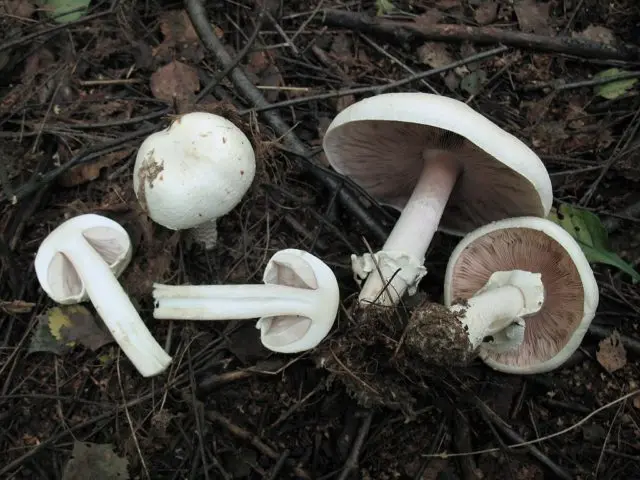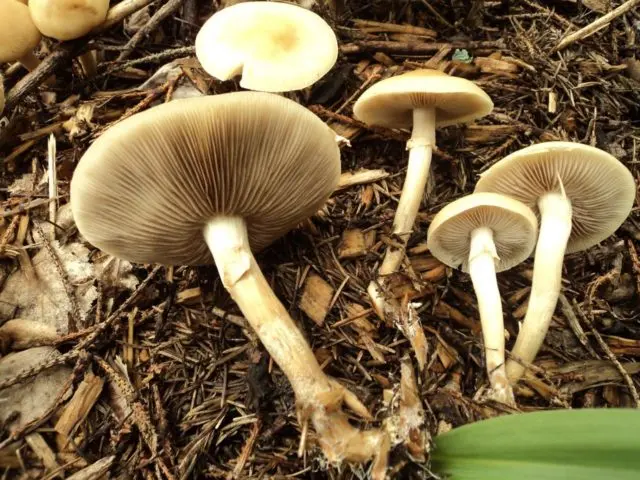Contents
Fans of quiet hunting know about 20 species of edible mushrooms. In fact, there are many more types suitable for cooking. Among them are many edible and conditionally edible varieties. These include black-spored stropharia.
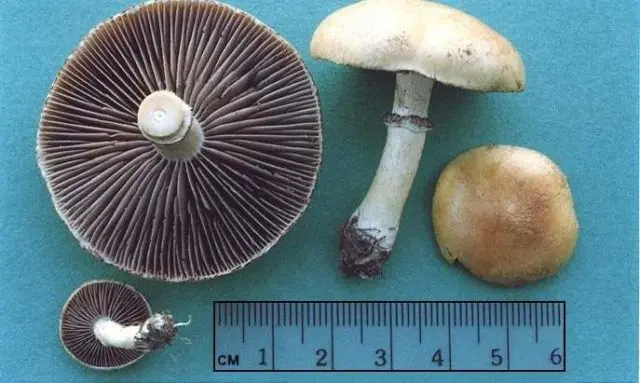
By what signs to distinguish a mushroom among many relatives, not everyone knows. This species is found quite often, like other representatives of the strophariaceae family, which are very similar to each other.
What does stropharia black spore look like
Stropharia chernosporovaya or chernosemyannaya – agaric with dense fleshy pulp. Has a cap from pale yellow to bright yellow color. It grows in groups, most often occurs in late summer and autumn.
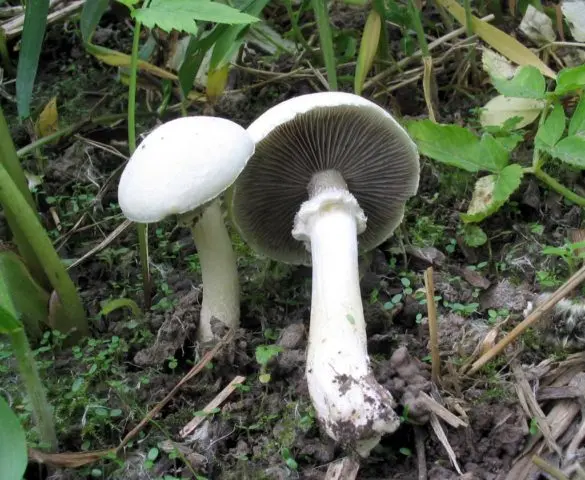
Regarding the taste qualities of such a conditionally edible species, opinions were divided. Some mushroom pickers believe that black seed stropharia does not have a pronounced mushroom aroma. The mushroom is not poisonous, does not contain hallucinogens.
Outwardly, black spore stropharia looks like champignon. The main difference is that in the process of heat treatment, the plates lose their specific color.
Cap Description
The mushroom has a white cap with a slight yellowish tint, or a rich yellow (lemon) color in the center. The edges are white. The color is uneven, the hat fades with growth.
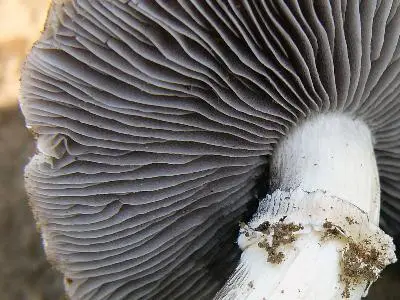
In diameter, it reaches 8 cm, young specimens – from 2 cm. The shape is pillow-shaped, opening with age, turning into prostrate. Flakes can be found along the edges of the hat – the remains of the bedspread. In rainy and damp weather, the hat becomes oily.
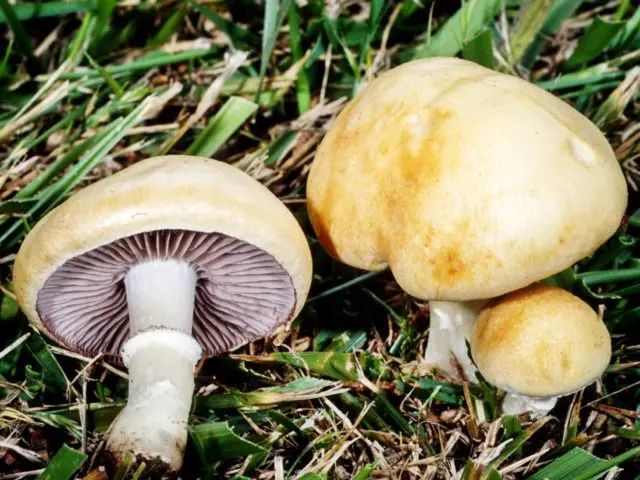
The plates are located moderately often, intermittent, adhering to the stem with a tooth. At the beginning of growth, they are grayish, with maturation, the spores acquire a rich color from gray-gray to black-violet.
Description of the leg
The leg of the black-spored stropharia is almost even, 1 cm in diameter. The height reaches up to 10 cm. There is a neat, even ring in the upper part of the leg, which becomes dark as it matures.
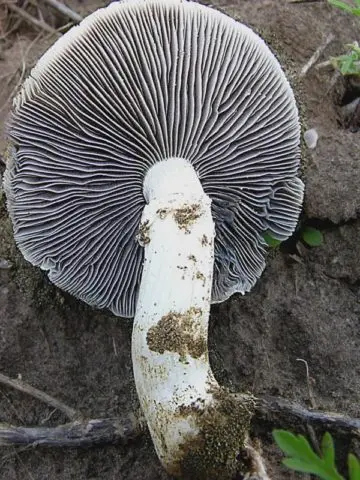
The lower part of the leg is covered with white flakes. The shape is cylindrical with a thickening at the bottom. Solid at the top, hollow below. May have occasional yellowish spots on the surface.
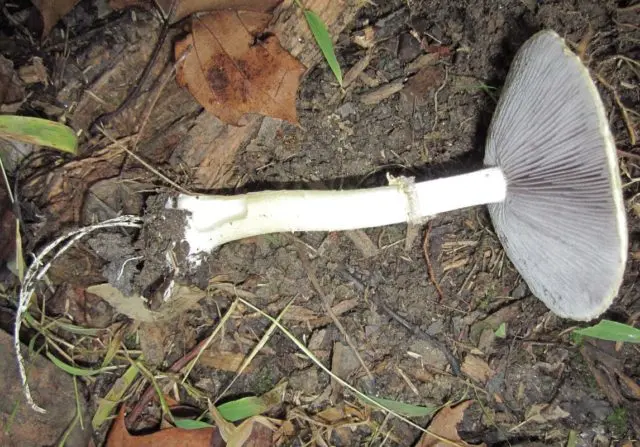
Where and how does black-spored stropharia grow
Prefers meadows, fields, pastures. Grows in grass, more often among wormwood shoots. Likes sandy and manure soils. Less common in forests, prefers deciduous trees. Frequent visitor to the gardens.
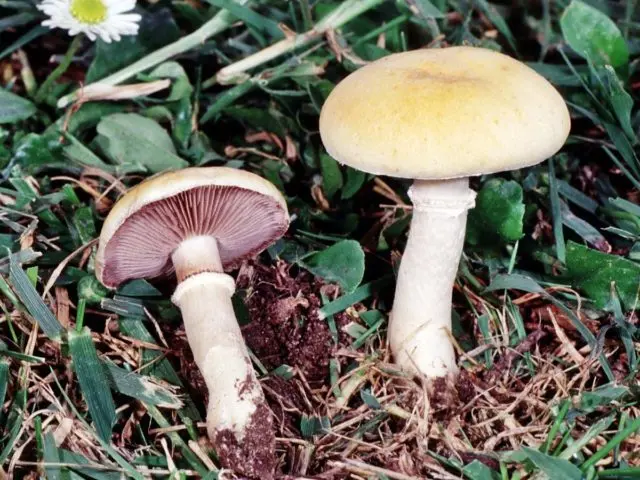
Black-seed stropharia grows in groups or singly, usually in an aggregate of 2-3 mushrooms. Distributed in the south of the country, active growth occurs in early summer and continues until the end of autumn. In dry periods, it stops growing.
Is the mushroom edible or not?
Stropharia chernospore belongs to the category of conditionally edible mushrooms. The mushroom does not contain toxic components, does not belong to hallucinogenic.
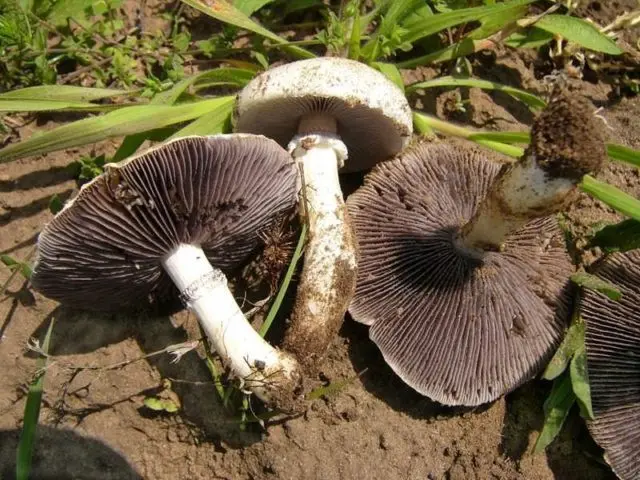
When broken, it has a sweet smell. During heat treatment loses the color of the plates. Dishes prepared from black spore stropharia do not have a bright mushroom taste and aroma. Therefore, this type of mushroom is not popular among mushroom pickers.
Twins and their differences
Chernospore stropharia has twins that are quite easy to distinguish upon close examination:
- Champignon woodland or thin – edible non-poisonous mushroom. A characteristic difference is that the champignon has a different shape and color of the plates, a larger ring, cream color of the spores;

- The vole is early (early vole, early agrocibe) outwardly resembles black-seed stropharia. It is also edible, unlike stropharia, it has a pronounced mushroom aroma. It bears fruit in the first months of summer. The flesh on the break is brown, the leg is cream-colored.

Conclusion
Black-spore stropharia is a conditionally edible mushroom that prefers meadows, fields and gardens. Rarely found in forests, and stops growth and fruiting during drought. Unfamiliar to mushroom pickers, it can be used in cooking if properly processed. Having carefully studied the features of the structure and color, it is difficult to confuse it with poisonous specimens.










